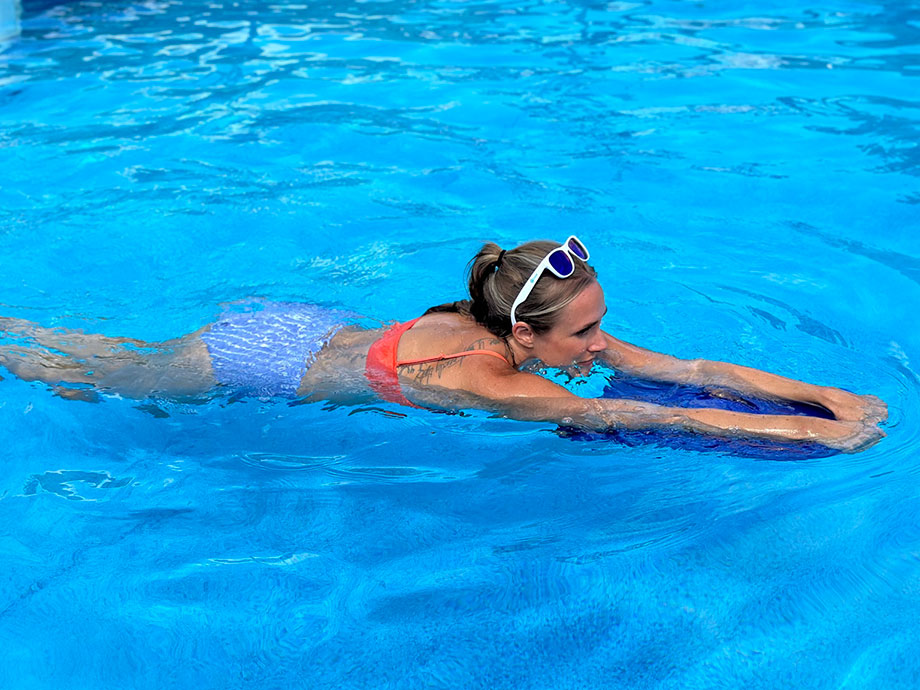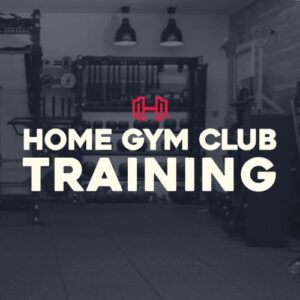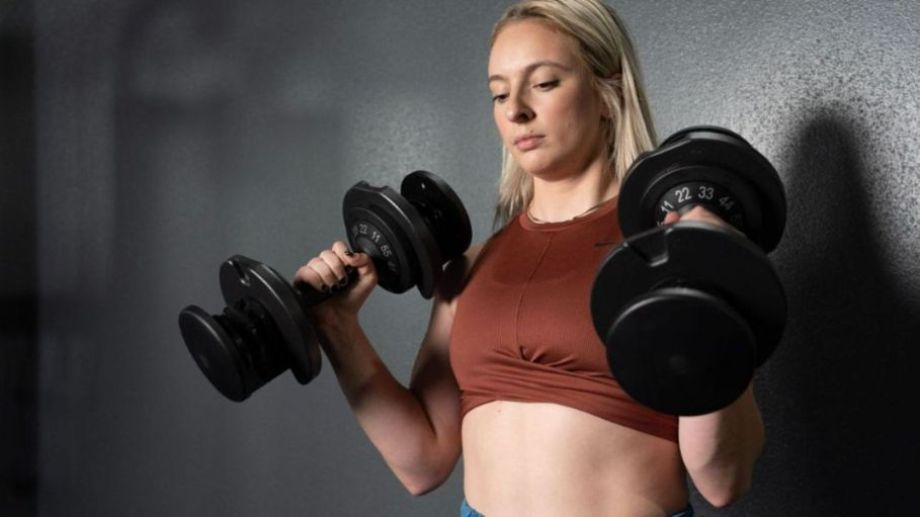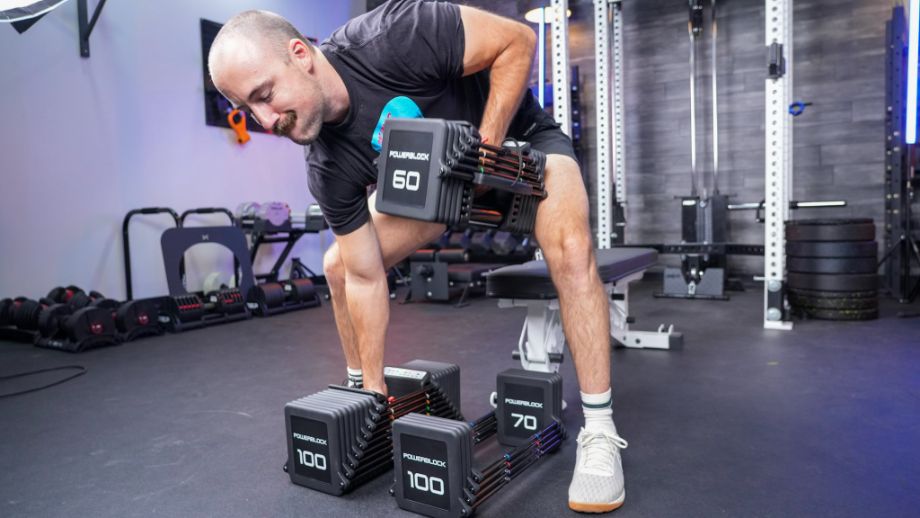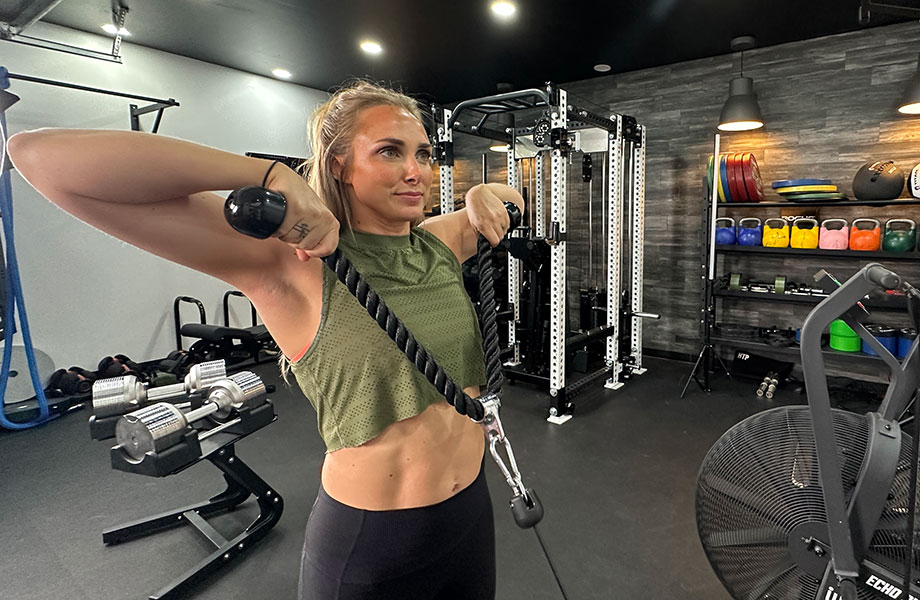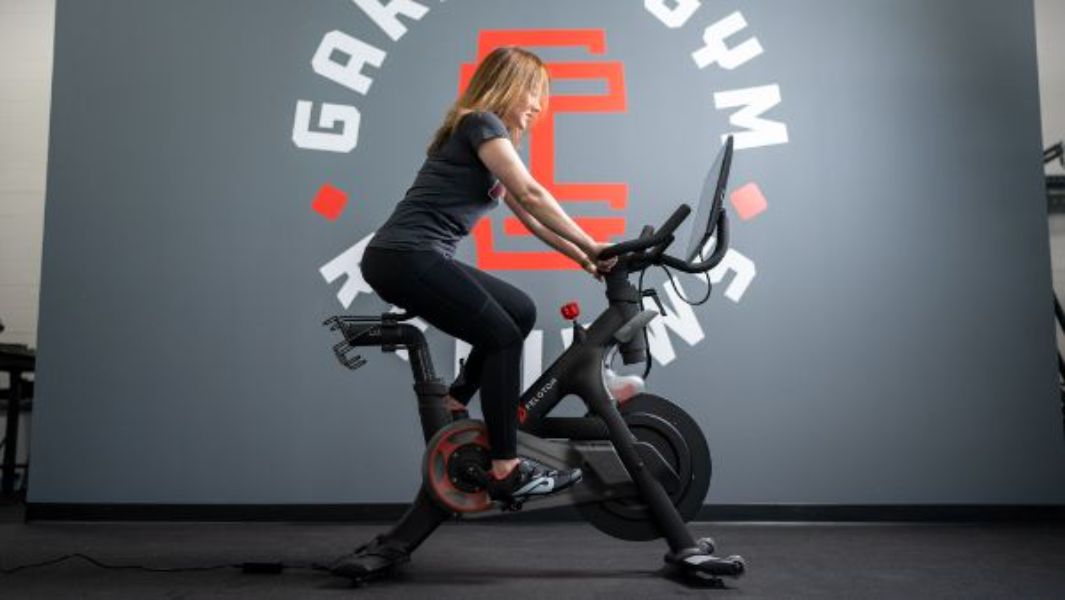Despite being raised in a cold-climate state like Connecticut, my first decade on Earth included plenty of time in a swimming pool. Ironically, my family relocated to South Florida when I was 11, allowing us to dip our toes into our inground pool at any time of the year.
However, long before lounging around our screened-in pool became an option, my parents made sure my brother and I learned how to swim safely and effectively from the pros. From mastering the backstroke and breaststroke to figuring out the art of breathing while being submerged in water, those weekly lessons at a local swim club helped us become proficient and confident in our abilities to navigate deep waters.
RELATED: 12 Trainer-Approved Pool Exercises
Of course, those swimming sessions featured many laps up and down the length of the pool. While I didn’t care about keeping an accurate count as a kid, my adult self doesn’t have the luxury of not staying on top of exactly what I do with my free time.
It shouldn’t be news that swimming is one of the best bang-for-your-buck forms of exercise. But, do you know how many laps in a pool is a good workout? Instead of playing the proverbial guessing game, I’ll help you pinpoint some concrete numbers so you can maximize your aquatic exercise efforts.
So, put on your swimsuit, grab your goggles, and get ready to dive into your pool with purpose.
What Is Considered a Lap in Swimming?
In its simplest form, a lap is the distance swam from one end of the pool to the other and back. However, just like not all of the best dumbbells are built the same, not all pools have the same dimensions. Therefore, you could conceivably rack up a ridiculous lap count without covering a ton of distance, depending on the type of pool.

For instance, a lap pool is a long, narrow pool specifically designed for one purpose: going up and back. They range in size, with the standard length being at least 25 yards long, according to Competitor Swim®. In most cases, one lap equals 50 yards. Home lap pools may be shorter due to space or budget constraints. The straightforward, elongated design makes it easy to incorporate swimming or basic water aerobics into your fitness routine.
RELATED: Best Water Aerobics Exercises
Other Types of Pool Dimensions
On the other hand, an Olympic-size pool is officially recognized by the International Swimming Federation (FINA) for international competitions, including the Olympic Games. Featuring a depth of at least two meters (about 6.6 feet) and 10 lanes, this competitive swimming pool measures 50 meters long and 25 meters wide, according to Competitor Swim® That means one lap equals 100 meters or about 328 feet.

Here’s a quick look at other types of pools, along with their typical dimensions:
- Long Course Swimming Pool: Also referred to as a long course meter (LCM) pool, it measures 50 meters long, 25 meters wide, and 2 meters deep. Not all LCM pools meet the standards set by FINA, which means not all LCM pools can be used for international and Olympic competitions.
- Short Course Swimming Pool: Measuring 25 yards long and between 45 to 75 feet wide, a short course yards (SCY) pool is used for high school and college swimming competitions in the United States. This shortened distance requires more frequent turns. There’s also a 25-meter version called a short course meters (SCM) pool that’s slightly longer.
- Water Polo Swimming Pool: Measuring 25 to 30 meters long and between 20 to 25 meters wide, a water polo pool must have a minimum depth of 1.8 meters (5.9 feet). While they don’t have traditional swimming lanes, these types of pools typically have markings for the goal line, halfway line, 2-meter line, and 5-meter line.
RELATED: Best Waterproof Fitness Trackers
Determining Your Ideal Number of Laps
Now that you know a little more about the different dimensions, let’s dive into our main concern: Just how many laps in a pool is a good workout? Like any fitness-related endeavor, there’s no one-size-fits-all answer, as we all have different body types and abilities.
However, based on my experience as a certified personal trainer (CPT), seasoned swimmer, and longtime athlete, I can make some general recommendations based on your experience level.
Beginners
Just like you shouldn’t jump into advanced sprint workouts if you just bought your first pair of running shoes, you shouldn’t try to do your best Michael Phelps impression if you’re a novice swimmer or don’t routinely exercise. If you’re using a 25-yard pool, start with a few laps (two to three) to gauge your fitness level.
Are you gasping for air by the end? Or do you feel capable of cranking out more reps?
Set an initial goal of 10 laps or 20 lengths of the pool. That equates to 500 yards, or about a quarter of a mile. You may not be able to hit all 10 without taking a break, but this is a good starting point. Remember, you can always increase your output over time.
Intermediate Swimmers
Once you’ve increased your cardiovascular fitness and grown accustomed to swimming workouts, you can pass that 10-lap target. Intermediate swimmers can shoot for 20 laps per session, which equates to 1,000 yards. A half-mile of swimming may not seem like much compared to a half-mile of running, but believe me, it takes quite a different toll on your body.

Let’s not forget that water provides significantly more resistance than air, which makes swimming laps quite challenging, even for those who can crush CrossFit WODs and land-based workouts with relative ease.
Advanced Swimmers
An effective workout for advanced swimmers may require a half-century’s worth of laps. Of course, this can vary based on your goals, time constraints, and training style. However, aiming for 50 laps in a 25-yard pool would allow you to rack up 2,500 total yards—an impressive total by anyone’s standards.
What does that look like in more practical terms? Whether you freestyle or use a combination of swimming strokes, you’ll cover 1.42 miles of ground (or water, in this case). Although there isn’t a universal ratio for converting swimming distance to running distance, a general rule of thumb is that one mile of swimming equals four miles of running. Keeping that in mind can help you structure your cardio routine to strike the right balance of training and recovery.
Benefits of Swimming
You don’t need to hire a swim coach or aspire to compete in a triathlon to reap the rewards of pool-based training. Once you realize the wealth of benefits of swimming, you may just find yourself carving out more time for aquatic exercise.
Full-Body Workout
You won’t find many forms of exercise that work all your muscle groups simultaneously. However, swimming is definitely one of them. The definition of a full-body workout, swimming requires head-to-toe effort.
First, you must synchronize your legs and feet to kick effectively. Depending on the stroke, you must also engage your core and lower-back muscles to stay stable and maintain buoyancy. And while different swimming strokes involve different arm angles, your deltoids, lats, and other upper-body muscles will get quite a stimulus working against the water.
RELATED: Full-Body Workout Vs Split
Can Help Improve Your Cardiovascular Health
Whether you’re treading water or practicing different strokes, expect your heart, lungs, and the rest of your cardiovascular system to put in some serious work. This makes swimming particularly beneficial for those with blood pressure issues, as an older study in the Journal of Hypertension1 found that swimming training elicits significant reductions in arterial blood pressure at rest in individuals with hypertension.

In my experience, adding swimming workouts to your cardio routine can provide a nice mental and physical balance.
RELATED: Best Cardiovascular Exercises
Low Impact on Your Joints
Unlike treadmill or StairMaster workouts, swimming is a low-impact form of cardio. In fact, it’s arguably the best exercise option for anyone with joint health issues. For example, a 2016 study in the Journal of Rheumatology2 had 48 sedentary middle-aged and older adults with osteoarthritis perform a supervised exercise training plan for three months. One group performed cycling for 45 minutes a day, three days a week, at a 60% to 70% heart rate reserve. The other followed the same protocol with swimming as the mode of exercise.
Regular swimming exercise reduced joint pain and stiffness associated with osteoarthritis and improved both muscle strength and functional capacity in participants. As a CPT, I recommend a combination of swimming, bodyweight exercises, and mobility work for anyone who’s struggling with joint pain.
RELATED: Best Low-Impact Exercises
Can Help Build Strength and Muscle
Does swimming build muscle as effectively as a traditional strength training workout routine? Of course not. However, is it another avenue to develop stronger muscles? Absolutely.
According to a 2015 study in the Journal of Exercise Rehabilitation3, regular swimming exercise can be effective for improving the physical composition, physical strength, and blood lipids of middle-aged women. When you consider the nearly unlimited amount of resistance water provides, it’s easy to see how swimming can elicit muscle and strength improvements.
Can Help Boost Your Mood and Cognitive Function
Swimming is more than just a way to support your weight-loss efforts or increase your number of calories burned. According to a 2022 systematic review in Frontiers in Psychiatry4, aquatic exercise could statistically significantly improve your mental health. The researchers also concluded that light aquatic aerobics “probably has a better effect on mood and anxiety symptoms.”

RELATED: Benefits of Water Aerobics
Furthermore, swimming may offer cognitive function benefits. According to a 2019 study in Physiological Reports5, 20 minutes of moderate-intensity swimming helped improve cognitive performance by eliciting cerebrovascular adaptations. The researchers concluded that the acute benefits of swimming on cognitive performance imply that regular swimming may encourage chronic cognitive health benefits.
Swimming Safety Tips and Precautions
Whether you’re performing pool exercises for weight loss or swimming laps, safety should always be your top priority. Here are some strategies to ensure your workouts go as smoothly as your backstroke.
Exercise Proper Lane Etiquette
The term “stay in your lane” actually means something in the swimming world. Pay attention to where you are in the pool, as crossing over to another lane could cause a collision between you and another swimmer. The last thing you want is to disrupt someone else’s flow or cause an injury.
Stay Hydrated
It may seem ironic since you’re submerged in water, but far too many people forget to stay hydrated while swimming. Make sure to bring a bottle of water to your pool session and take breaks to rehydrate. I also recommend throwing in some electrolytes to help replace sodium, potassium, magnesium, and chloride lost through sweat.
RELATED: Best Electrolyte Powders
Listen to Your Body
While I’m keen to push myself to the limit on land, it’s best to be a little more cautious when you’re in the water. If you’re really having trouble catching your breath, head to the shallow end and take a break. If you’re feeling lightheaded, carefully exit the pool and end your session a little early rather than too late. There’s no reason to try and be #Aquaman when you’re on the verge of passing out.
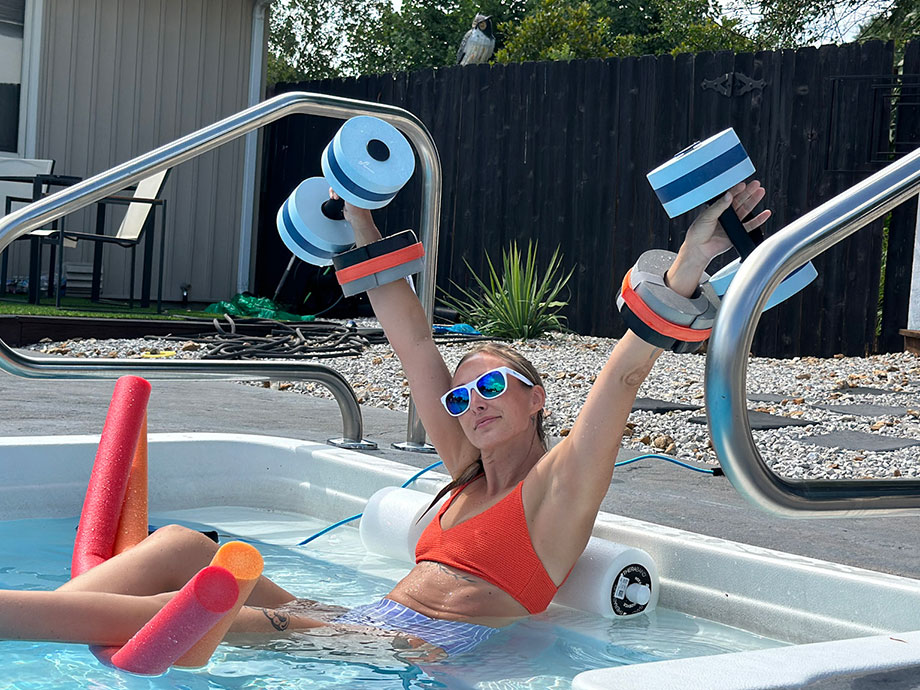
Don’t Forget to Warm-Up or Cool-Down
Don’t make the mistake of diving right into your swimming workout. As is the case with any form of exercise, take some time to prepare your mind and body with warm-up exercises. After you’ve reached your target lap count, perform cool-down exercises, such as static stretches, to allow your heart rate to return to normal.
RELATED: Best Cool-Down Exercises
How Many Laps In a Pool Is a Good Workout? Final Thoughts
While I haven’t swam as much in recent years as I did in my formative ones, I have a deep appreciation for this full-body form of exercise. While racking up a high lap count can help you burn calories, enhance your conditioning, and improve your range of motion and flexibility, I still encourage you to include traditional strength training in your workout routine.
If you’re new to the pool, shoot for 10 laps. Double that figure if you’re an intermediate swimmer. Advanced swimmers can shoot well past the 50-lap mark, especially if you’re training for a triathlon or competitive event.
RELATED: Triathlon Training Tips
No matter which category you fall under, focus on your form, pay attention to your body, and stay in your lane so you and your fellow swimmers can enjoy a safe, effective workout!
How Many Laps In a Pool Is a Good Workout? FAQs
How long should I swim for a good workout?
While there’s no one-size-fits-all approach to a swimming workout, start with 10 to 15 minutes to gauge your fitness level. Intermediate and advanced swimmers may train for 30 minutes or more, depending on their goals.
Is it better to swim or run for cardio?
As a CPT and longtime athlete, I believe swimming and running are both valuable forms of cardiovascular exercise. Neither is inherently better than the other, but swimming may be the superior choice if you have joint issues. Running is better suited to athletes who need to increase their speed or endurance for land-based activities or sports.
RELATED: Swimming Vs Running
How many laps can a beginner swim?
A beginner can initially aim for 10 laps before gradually increasing their lap count.
How many laps in a pool is equivalent to a mile?
According to Speedo, if you’re swimming in a 50-meter-long Olympic pool, a metric mile (1,500 meters) is equal to 30 laps. One mile in a 25-meter-long pool is equal to 60 laps. It’ll take 66 laps to cover one metric mile in a 25-yard pool.
References
- Tanaka, Hirofumi1,3; Bassett, David R. Jr1; Howley, Edward T.1; Thompson, Dixie L.1; Ashraf, Muhammad2; Rawson, Freeman L.2. Swimming training lowers the resting blood pressure in individuals with hypertension. Journal of Hypertension 15(6):p 651-657, June 1997.
- Alkatan M, Baker JR, Machin DR, Park W, Akkari AS, Pasha EP, Tanaka H. Improved Function and Reduced Pain after Swimming and Cycling Training in Patients with Osteoarthritis. J Rheumatol. 2016 Mar;43(3):666-72. doi: 10.3899/jrheum.151110. Epub 2016 Jan 15. PMID: 26773104.
- Lee, B., & Oh, D. (2015). Effect of regular swimming exercise on the physical composition, strength, and blood lipid of middle-aged women. Journal of Exercise Rehabilitation, 11(5), 266–271. https://doi.org/10.12965/jer.150242
- Tang, Z., Wang, Y., Liu, J., & Liu, Y. (2022). Effects of aquatic exercise on mood and anxiety symptoms: A systematic review and meta-analysis. Frontiers in Psychiatry, 13. https://doi.org/10.3389/fpsyt.2022.1051551
- Shoemaker, L. N., Wilson, L. C., Lucas, S. J. E., Machado, L., Thomas, K. N., & Cotter, J. D. (2019). Swimming‐related effects on cerebrovascular and cognitive function. Physiological Reports, 7(20). https://doi.org/10.14814/phy2.14247



